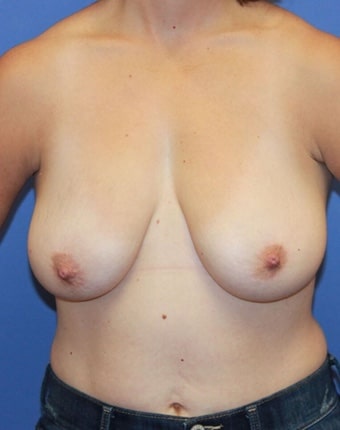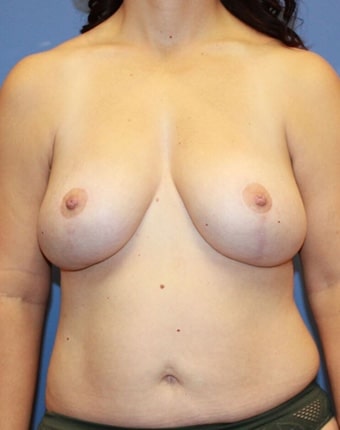Breast Lift Procedure: Mastopexy Salt Lake City
Over time breasts can droop and lose fullness. The heavier the breasts and the poorer the skin support, the more rapidly breast droop will occur. A breast lift is a procedure designed to lift droopy breasts with breast tissue and skin reshaping.
Breast Lift FAQs
The overall goal of Dr. Yates’ breast lift procedures is to return the breasts to a higher position on the chest. You can think of it as a younger position. The breasts sag for different reasons. As we age, weakening support tissues put more stress on the ligaments that attach the breasts to the pectoral muscles, and these ligaments stretch. The breasts grow by at least one cup size and then lose size (sometimes beyond their original size) during pregnancy and through breastfeeding. The gain and subsequent loss of a good deal of weight cause the skin to stretch. To reverse these changes, Dr. Yates removes excess skin and repositions tissue to raise and firm the breasts. In most of these procedures, the nipples and areolae are repositioned to match the higher position.
A lift targets the stretched sagging skin and other tissues that have flattened the breasts and dropped the breasts lower on the chest. The goal of a lift is to bring the breasts back to their former higher location on the chest. Excess skin is removed, breast tissue is repositioned, and the nipple/areola complex is moved up and often decreased in size. Breast lifts have nothing to do with breast volume, only breast position, and sagging skin.
Augmentation has the goal of increasing the size and volume of the breasts. Augmentation makes the breasts fuller, especially in the area above the nipples. Augmentation does less for sagging skin, although implants can correct a small amount of sagging by adding volume.
Three categories of patients
- Patients who need a lift. The amount of droop will require it
- Patients who will benefit from a lift but we have to determine whether the scars are worth it for that individual patient’s goals
- Patients who don’t need a lift
Dr. Yates will help the patient determine whether a lift is worth it to them or not. 3D imaging is often a helpful tool in this decision. Since 2010, 3D imaging has been available in our office in Layton, UT.
A breast lift can be designed to treat asymmetric breasts. Breast lift is a very artistic procedure and each breast is treated separately.
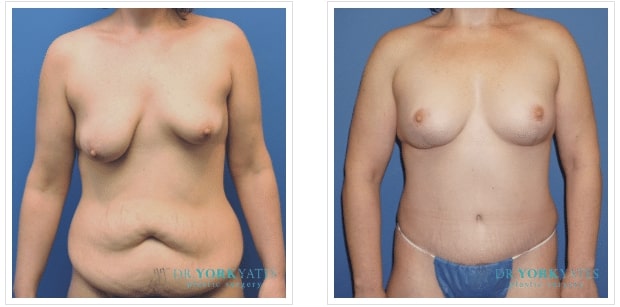
With his breast lifts, Dr. Yates seeks to redistribute the breast tissue to a higher position on the chest. This is because the combination of aging, pregnancy, breastfeeding, and gravity tends to accumulate more and more of the breast mass at the bottom of the breasts. This can create a pendulum-like appearance. This surgery changes that, returning the breasts to a higher, younger position on the chest. Lifts are very satisfying procedures for women whose breasts have become pendulous. Lifts can downsize enlarged areolae. They can take nipples that may be pointing downward and bring them back to their natural higher position.
And if you opt to add augmentation, you’ll gain a curvier figure at the same time.
Breast lifts are great procedures if you’re unhappy that your breasts have flattened and seem to have lost volume. If these characteristics sound like your situation, this could be a good procedure for you
- Your breasts have lost their shape or volume
- Your breasts sag
- The skin on your breasts is stretched
- Your breasts are flat, elongated, or pendulous
- Your nipples point downward
- Your breasts are asymmetrical
There are a couple of things to note, however. Breast lifts with Dr. Yates don’t change the size of your breasts; they simply bring more breast mass back up to a higher position on the chest. A lift doesn’t change the fullness or roundness in the upper portion of the breasts a lot. If you want to add fullness or size, adding implants to the breast lift procedure will accomplish that.
Also, if you plan on having additional children, you are not a perfect candidate for a breast lift. That isn’t an arbitrary thing — pregnancy and breastfeeding can affect your results.
As with all of his surgeries, Dr. Yates treats each case as completely unique, adapting the methods he uses to fit the needs of the patient. The options for these surgeries are generally an incision only around the areola (areolar incision), an incision around the areola dropping down the breast to the crease (lollipop incision), and an incision around the areola that drops down to the breast crease and moves outward in both directions (anchor incision). These are all described in the “How is a breast lift performed?” question.
An internal bra is a concept of adding a surgical scaffold, most commonly Galaflex, to support the implant. It doesn’t replace a breast lift but could improve support for patients who are at risk of poor implant support. This is generally different than breast tissue support from heavy, droopy breasts. Determining whether one would be a candidate for an internal bra requires an in-depth consultation to assess all of the influential factors. Click the link if you want to learn more about internal bras.
We also hear patients ask us about “internal lifts”. This would be different than an internal bra. The idea of an internal lift is that the breast tissue can be lifted through a standard breast augmentation incision and attached to the underlying muscle in a higher position. Although great in theory, Dr. Yates opinion is that this does not provide any more lift than a standard dual-plane augmentation would naturally provide but can add cost and risk.
You’ll need to make the same preparation you would for any surgery: stopping any blood thinner medications, anti-inflammatory medications, various supplements, smoking, and the like. Your main preparation should be in your recovery area. You’ll want to lay low for a few days, so make your space comfortable and ready for you. Have a good book and the remote handy. Get someone to help you around the house for a week or so. Remember, you’ll have to limit the amount you lift for a few weeks, so be cognizant of that.
Breast lifts can be performed under general anesthesia in an outpatient operating suite or local anesthesia with deep sedation in Dr. Yates AAAASF certified clinic operating room. Dr. Yates is proud of our in-office operating experience and patients love it as well.
As with each of his surgeries, Dr. Yates views every breast lift as unique to that patient. Excess skin, sagging, support tissues, even fatty areas in the breasts vary between each patient. Because of that, Dr. Yates adapts these procedures to fit the unique needs of the patient. With a breast lift, the incision locations and the extent of the incisions vary depending on the degree of sagging and how much excess skin needs to be removed. There are three options for your incisions
- Areolar incision – A donut-shaped incision is made around the areola. This is also known as a donut mastopexy. This method can be used with women who have minimal sagging and minimal excess skin. It creates minimal visible scarring, as the incision is hidden by the areola. If larger degrees of lift are treated with this approach it can stretch the areola and flatten the breast. Nipple lift of approximately 2 cm is possible
- Lollipop incision – This starts with the donut-shaped incision, but it then extends downward, ending at the breast crease. This is the procedure of choice for most breast lifts. The nipple can be lifted significantly and the breast reshaped
- Anchor incision – This follows the lollipop incision but then extends in both directions along the breast crease. When there is significant skin excess this scar pattern is often required.
Once the incision has been made, Dr. Yates lifts and reshapes the breast tissue to counteract the way in which breast volume has bottomed out. If he uses the lollipop or anchor incisions, the nipples and areolae will be relocated to a higher position on the breasts to match the new profile. In most cases, Dr. Yates will also make the areolae smaller if the skin has stretched.
Although the areolar incision option takes less time, as the nipple/areola complex is not moved and excess skin is not trimmed, most of these surgeries take about two hours.
As mentioned above, many patients have Dr. Yates add implants during their breast lift to return some of the volume they’ve lost, especially on the top half of the breasts. Or they can simply want to have somewhat larger breasts. Adding augmentation to a lift is a perfect time, as Dr. Yates can place the implants through the incisions he has already made for the breast lift. Another option for adding additional size or fullness to the breasts is breast fat transfer, which can be done at the same time as a breast lift. Fat can be harvested from unwanted areas and grafted to the upper breasts for increased height and fullness. Many patients have excess skin on other areas of the body such as their arms that would also benefit from tightening. These are our weight loss or mommy makeover patients and other skin-tightening procedures, such as a tummy tuck, can often be combined.
Breast implants can be used in addition to a breast lift to help achieve more breast fullness. Breast implants are necessary if you would like to increase the size of your breasts.
There is a myth that the only way to achieve the fullness of the upper breasts is to add an implant. That is true with “skin-only” lift procedures. Deep breast tissue rearrangement and reshaping can result in some addition of fullness for some patients using the patient’s own breast tissue. However, if a significant increase in upper breast fullness is desired, an implant is necessary.
There is some degree of breast lifting with an implant alone from the effect of filling the skin envelope.
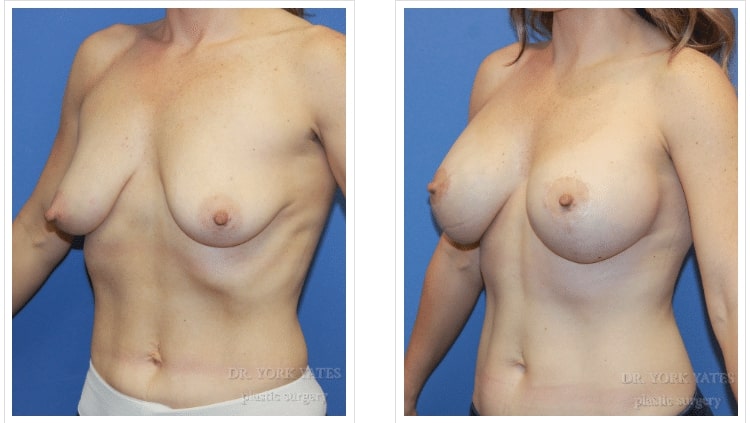
Breast implants can be used in addition to a breast lift to help achieve more breast fullness. Breast implants are necessary if you would like to increase the size of your breasts.
There is a myth that the only way to achieve a fullness in the upper breasts is to add an implant. That is true with “skin-only” lift procedures. Deep breast tissue rearrangement and reshaping can result in some addition of fullness for some patients using the patient’s own breast tissue. However, if a significant increase in upper breast fullness is desired, an implant is necessary.
There is some degree of breast lifting with an implant alone from the effect of filling the skin envelope. For some patients, a shaped or anatomic implant is better than a round implant in achieving this effect.
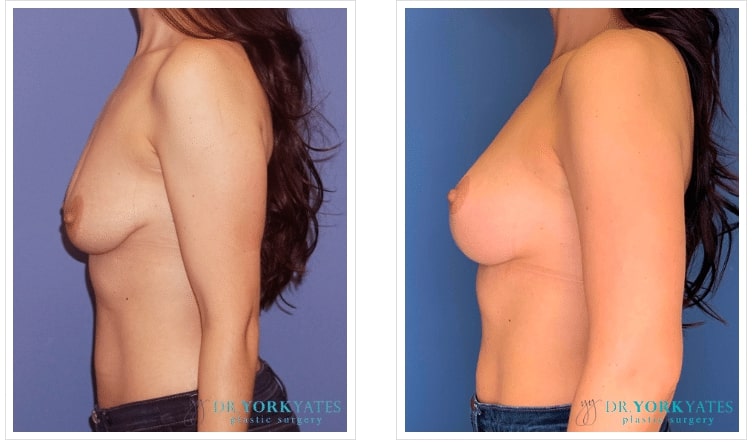
Women with heavy breasts who want less droop and more upper fullness often benefit from the reduction of the heavy lower tissue at the time of breast implants. This helps to achieve a fuller upper breast and the results last much longer. There are also often times where one breast is larger than the other and by removing more from the larger breast we are able to use the same implant on each side which helps to achieve improved symmetry.
Breast lift is a complicated procedure but the pain is often minimal. When an implant is added, there is more pain and recovery. Plan to take 1 week off office work, 3 weeks off physical jobs, and moderate exercise. The full, unrestricted activity starts at 6 weeks.
After a breast lift, most women retain the ability to breastfeed, but this is not guaranteed. This procedure affects the breast tissue, and there is a possibility that the milk glands can be impacted. This can affect the ability to breastfeed. The best-case scenario, however, is that it wouldn’t come into play. This is because Dr. Yates advises patients considering a breast lift to be confident they are not going to have any additional children. Why? The increase and decrease in size and volume loss caused by pregnancy and breastfeeding will negatively impact the results gained by breast lift surgery. In the event of future weight changes or pregnancy, it is possible that an additional lift is required.
The sagging and excess skin removed with your breast lift are permanently gone. Of course, your body will continue to age, and your tissues will continue to weaken and sag. Still, any future sagging won’t come close to the sagging that created the need for this surgery with Dr. Yates.
A variety of factors determine the degree of long term breast droop improvement. The patient’s tissue characteristics, elasticity, support, and breast weight will determine how well the lift procedure lasts. Generally, patients with heavier breasts and poor skin elasticity will not maintain the results as well, but this is impossible to absolutely predict.
Other than natural aging, the only way to really negate any of your results would be to gain and lose a large amount of weight, or to become pregnant again.
An implant can contribute longer lasting upper fullness. For some patients, a reduction of lower, droopy breast tissue with the addition of an implant can improve the longevity of the procedure. So-called – addition/ subtraction surgery. If you’ve opted for augmentation with your breast lift, implants have a lifespan of usually around 10 – 20 years, so you’ll probably need to have your implants replaced at least twice during your life (depending on your age).
One of three basic breast lift scar patterns is chose
Circumareolar (Scar Around The Areola Of The Nipple)


Lollipop (Scar Around The Areola And Vertically Beneath The Nipple)

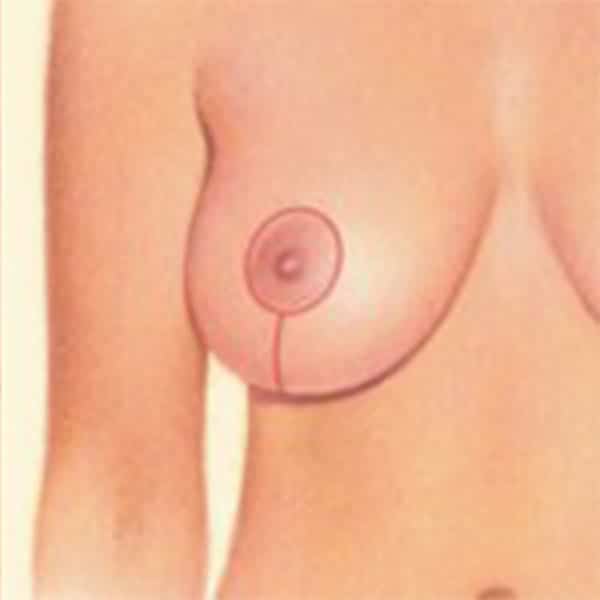
Anchor Scar (Lollipop Scar Plus A Horizontal Scar Beneath The Breast)

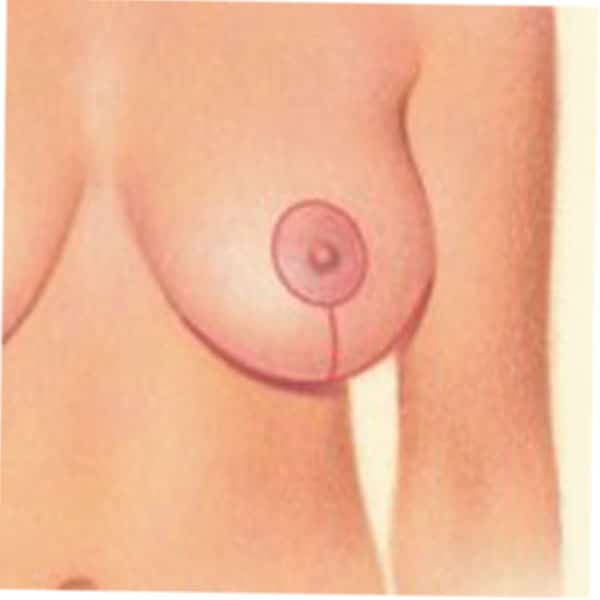
The technique used is tailored to the individual patient depending upon the degree of breast droop and skin excess. Other factors such as the size of the areola and whether or not an implant is added affect the decision as to which scar pattern would be best.
Breast lift surgery entails all the risks that come with any surgery: excessive bleeding, poor wound healing, infection, reaction to general anesthesia, and the like. Risks specific to breast lift include loss of nipple sensation, asymmetry, and inability to breast freed.
These are deemed elective procedures and they are not covered by insurance. Dr. Yates does offer a variety of payment options, however.
The average cost of surgeons fees for a breast lift is $4,377, according to the American Society of Plastic Surgeons 2014 statistics. This does not include implants, anesthesia fees, or operating room fees and the patient can expect a higher total cost. For a list of the costs of common procedures performed by Dr. Yates click here.
We would be honored to have you as our next breast augmentation patient. To schedule a consultation, call the office at 801.525.8741 or if you would prefer an online visit fill out a virtual consultation form. Dr. Yates will respond in a timely fashion to your inquiry.
Schedule a Consultation with Dr. Yates!
Be sure to reach out to the office of Utah Plastic Surgeon Dr. York Yates to learn more about breast lifts or to determine whether you are a candidate for the procedure. Call us at 801.525.8741 to schedule a consultation or click here send us an email contact form! We proudly serve patients in Layton, Utah and the surrounding areas.


